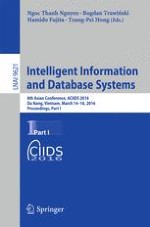2016 | OriginalPaper | Chapter
On Fast Randomly Generation of Population of Minimal Phase and Stable Biquad Sections for Evolutionary Digital Filters Design Methods
Author : Adam Slowik
Published in: Intelligent Information and Database Systems
Publisher: Springer Berlin Heidelberg
Activate our intelligent search to find suitable subject content or patents.
Select sections of text to find matching patents with Artificial Intelligence. powered by
Select sections of text to find additional relevant content using AI-assisted search. powered by
